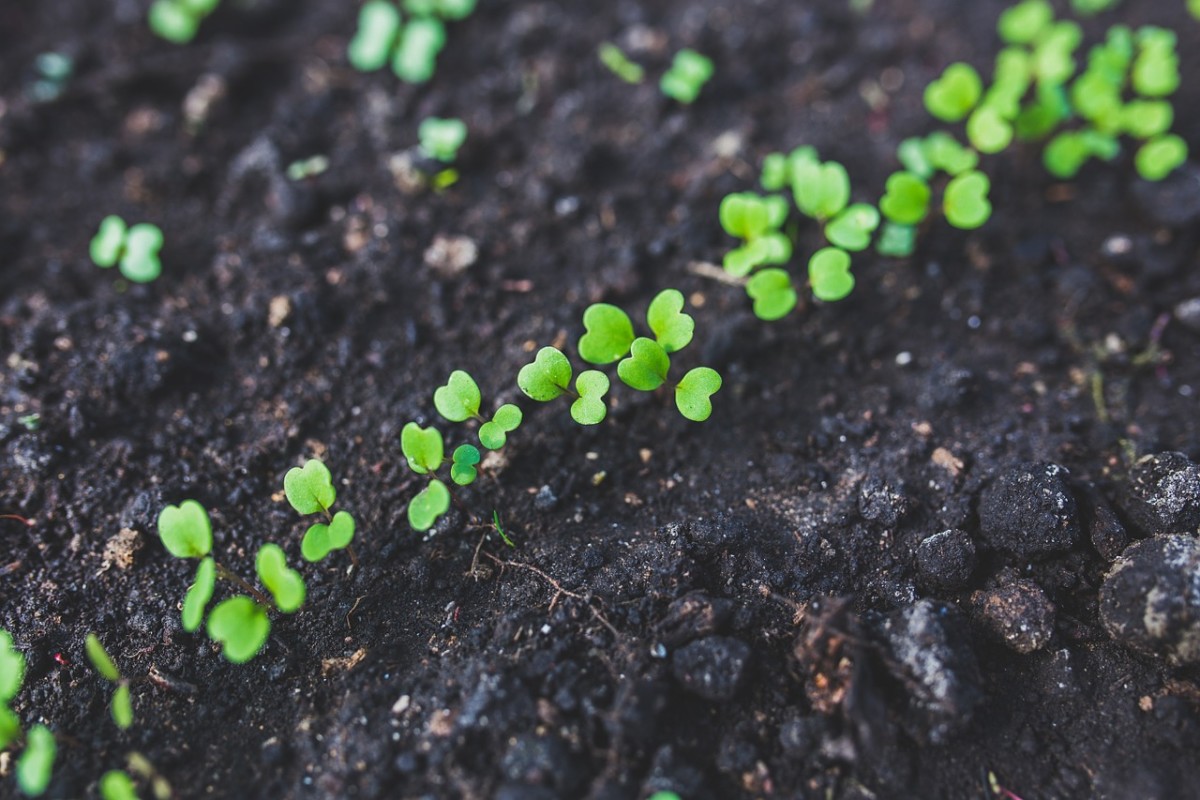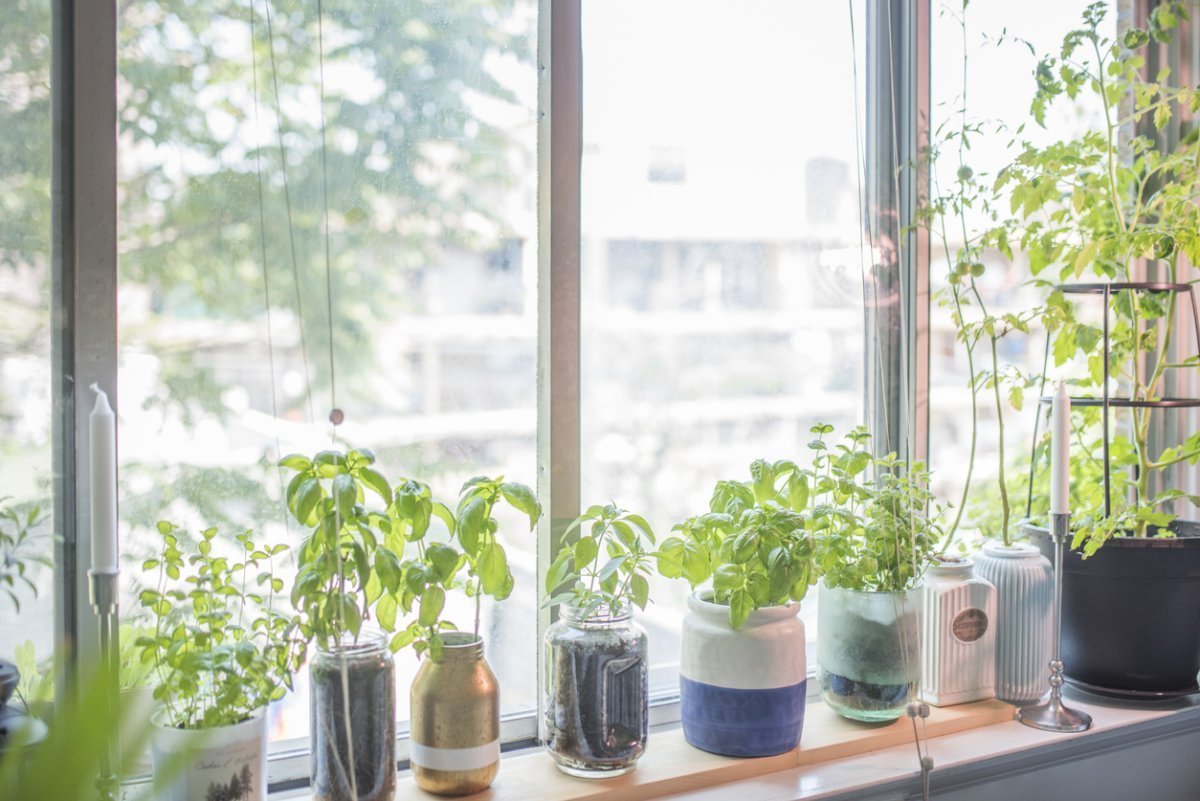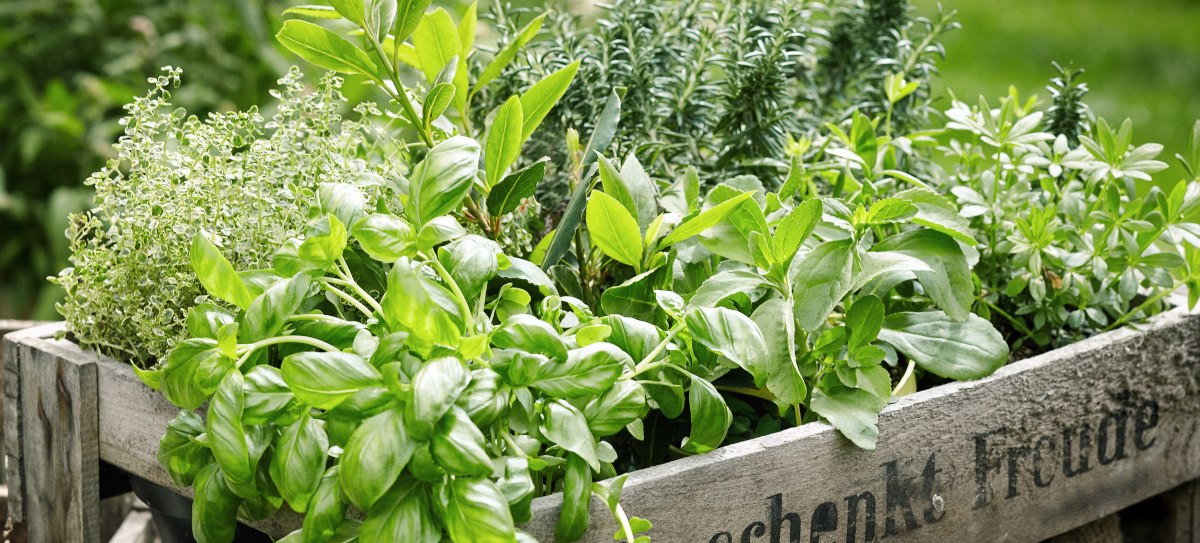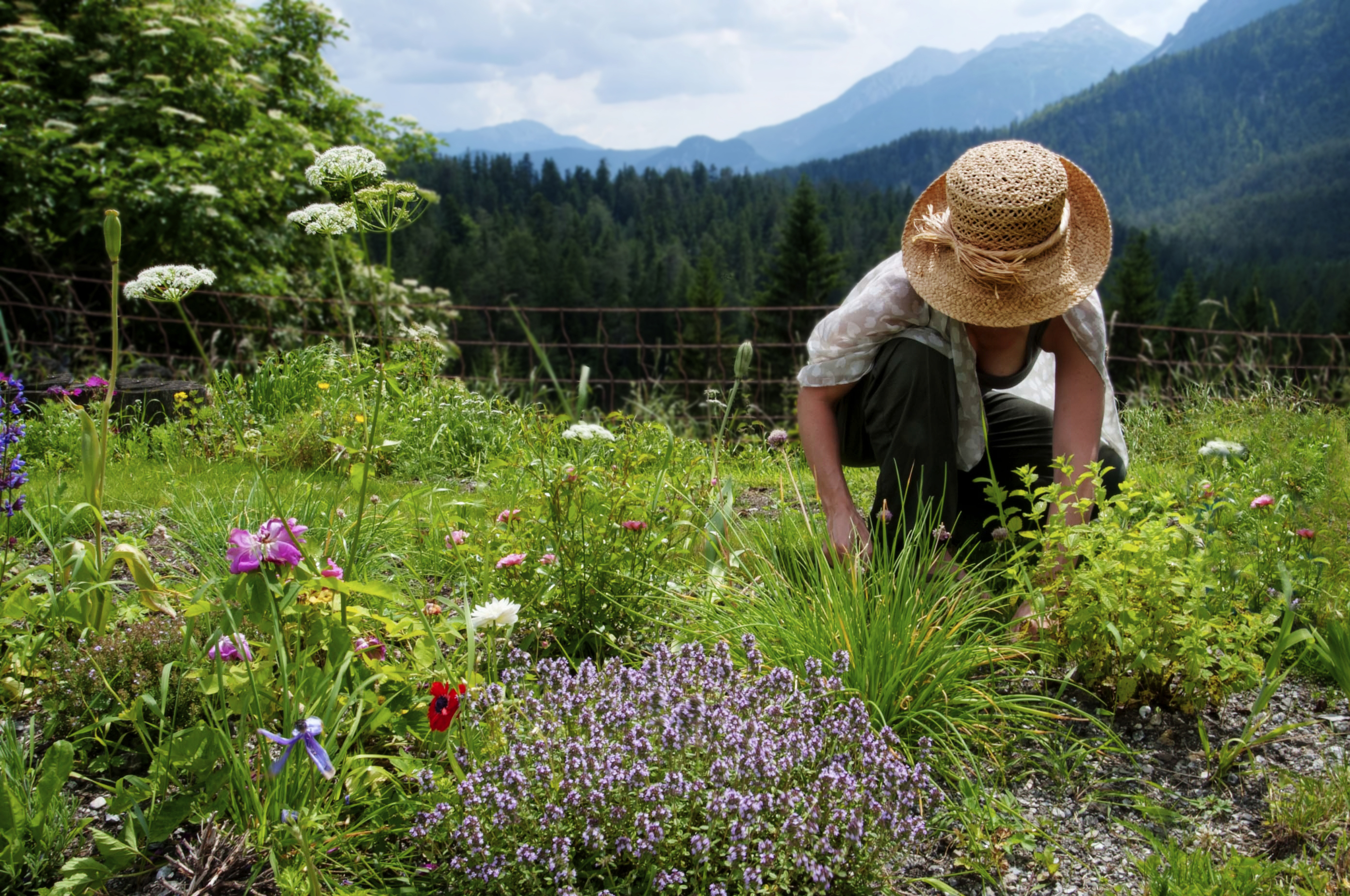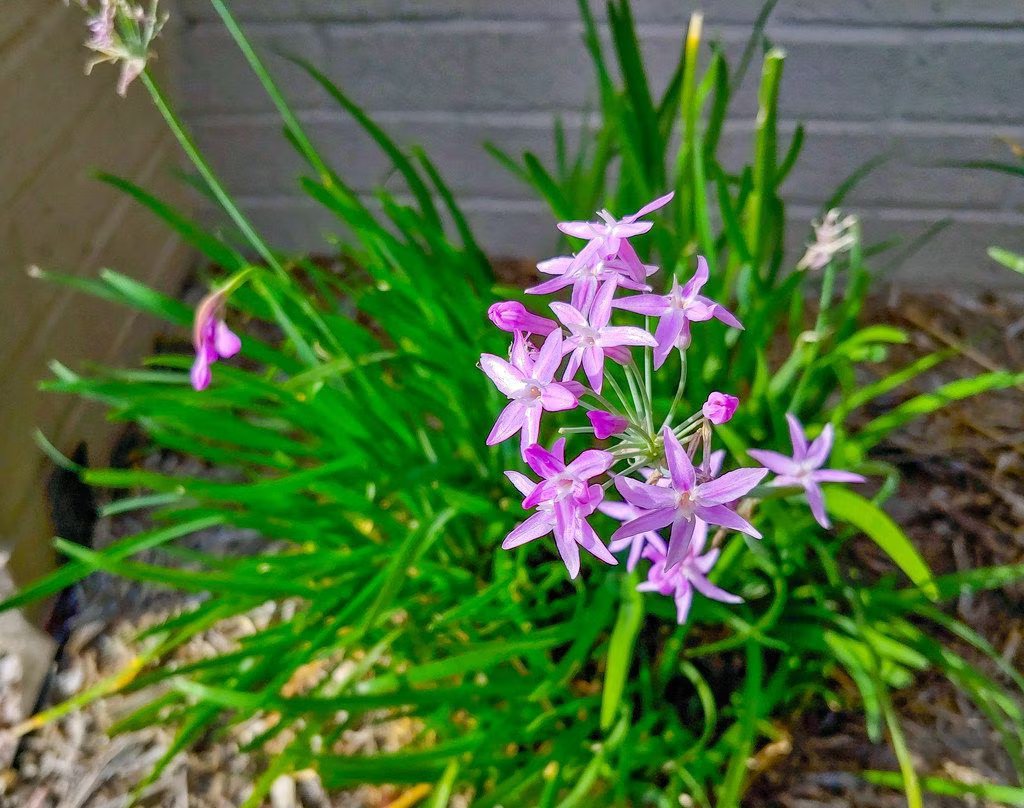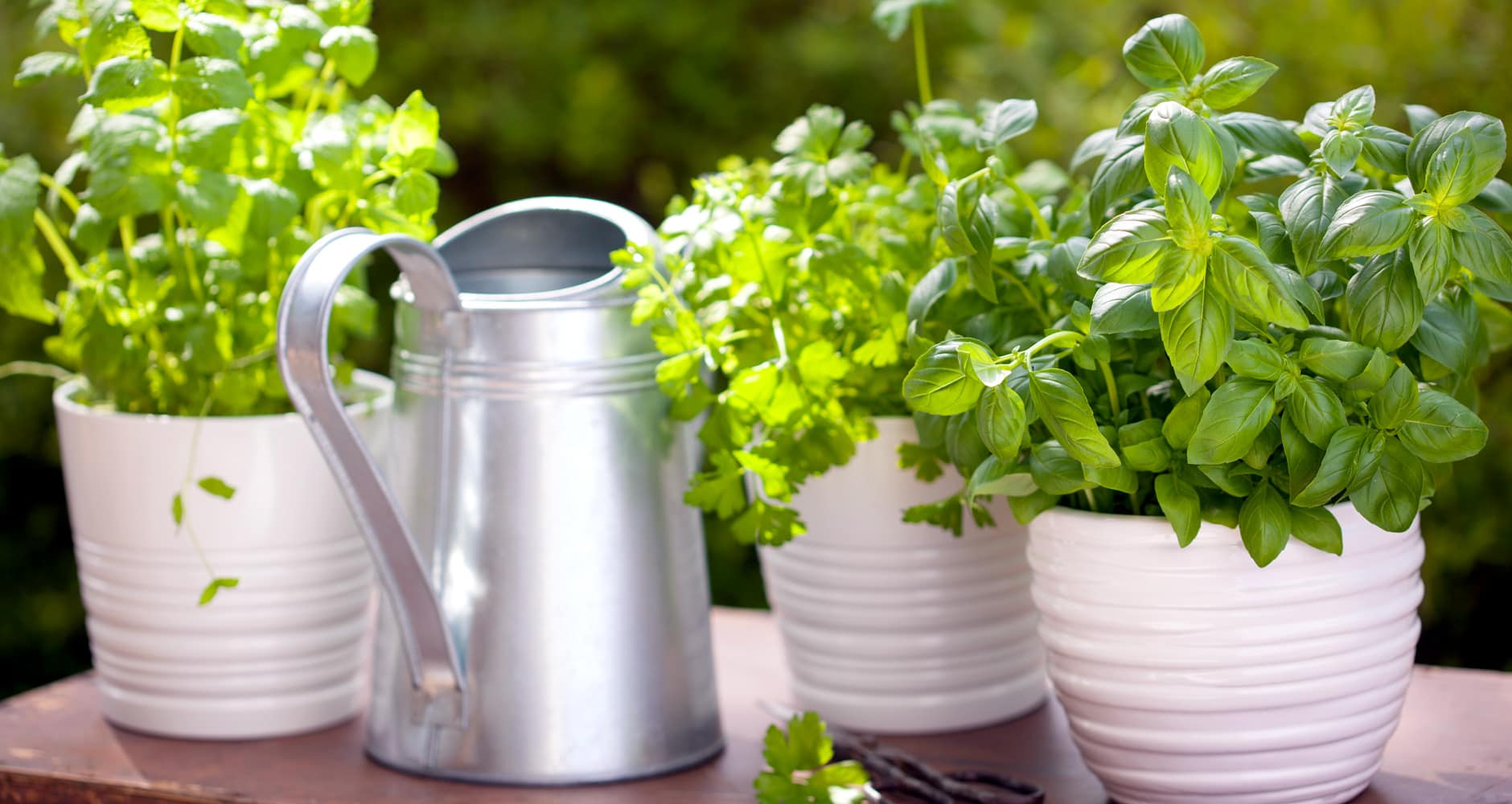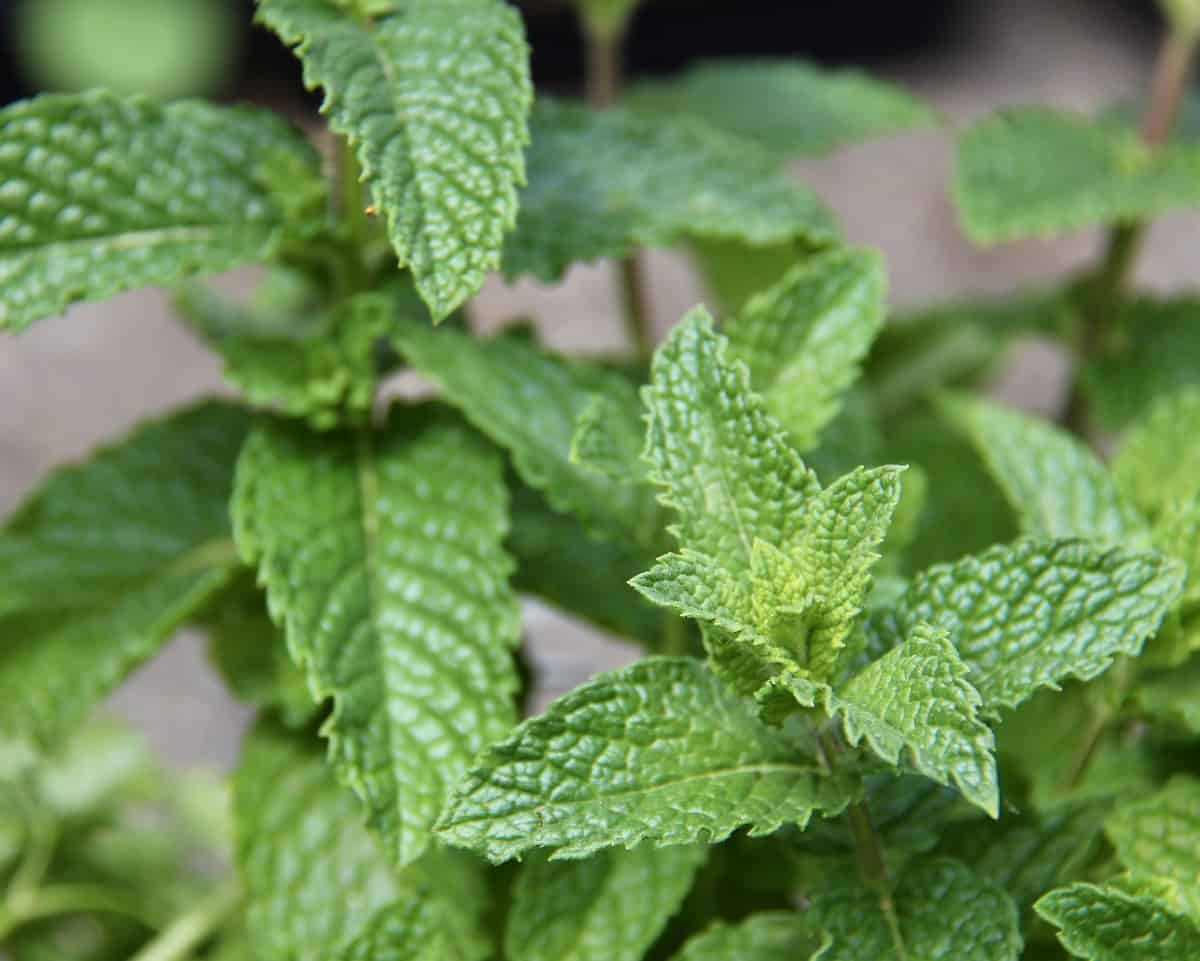Home>Types of Gardening>Edible Gardening>How To Grow Herbs In Pots
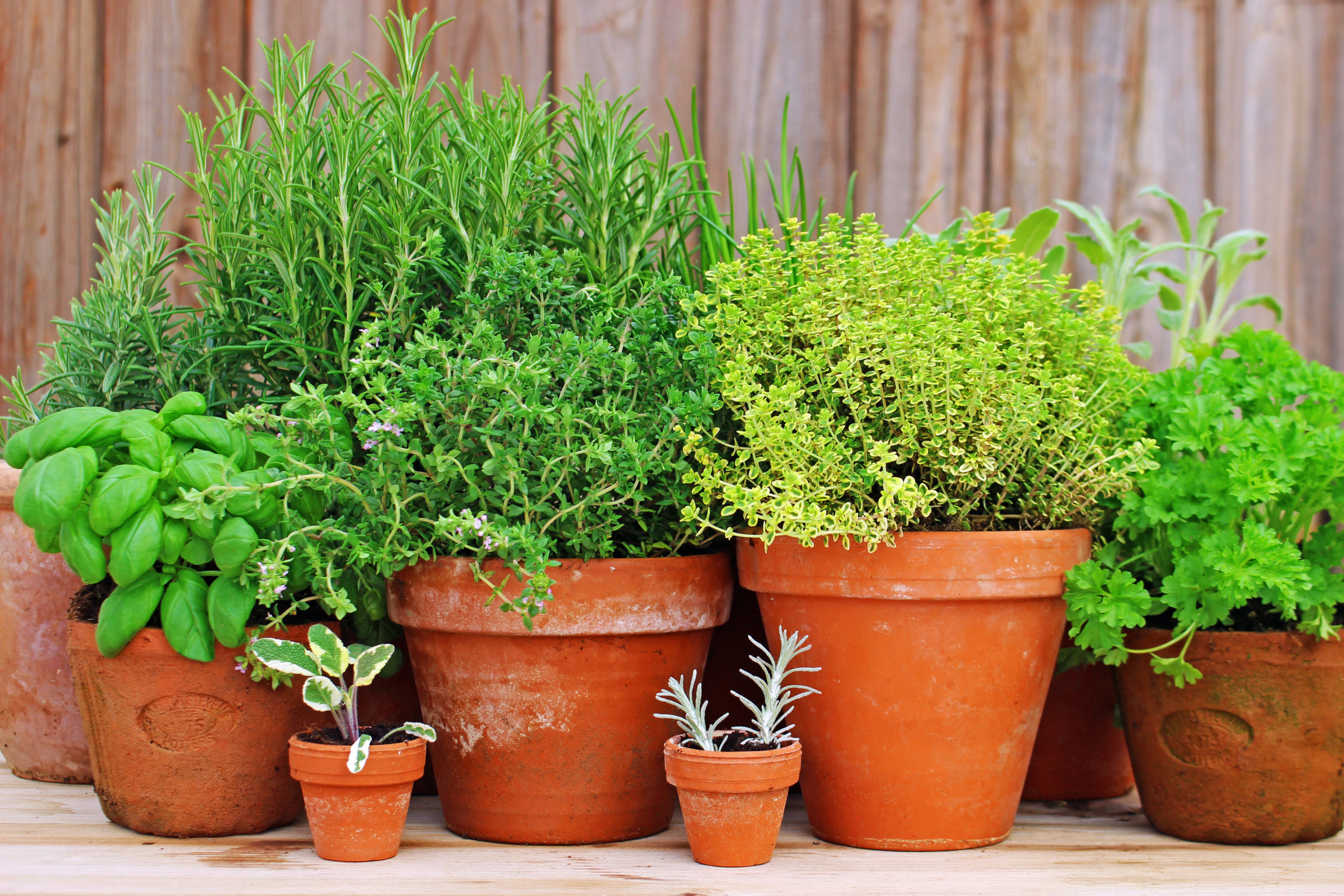

Edible Gardening
How To Grow Herbs In Pots
Modified: February 9, 2024
Discover the secrets of growing herbs in pots with our comprehensive guide. Perfect for beginners, this article will teach you all about edible gardening and how to create a thriving herb garden at home.
(Many of the links in this article redirect to a specific reviewed product. Your purchase of these products through affiliate links helps to generate commission for Chicagolandgardening.com, at no extra cost. Learn more)
Table of Contents
- Introduction
- Selecting the Right Pots for Herbs
- Choosing the Perfect Location
- Essential Soil and Drainage Considerations
- Selecting the Best Herbs for Container Gardening
- Planting and Transplanting Herbs in Pots
- Watering and Fertilizing Methods
- Managing Sunlight and Temperature Requirements
- Pruning and Harvesting Techniques for Potted Herbs
- Troubleshooting Common Herb Growing Issues
- Conclusion
Introduction
Welcome to the world of edible gardening! Growing your own herbs in pots is not only a rewarding and fulfilling experience but also a practical way to add fresh flavors to your cooking. Whether you have limited space, a small balcony, or a backyard, container gardening allows you to cultivate a wide variety of herbs right at your fingertips.
Imagine the convenience of stepping outside and snipping a handful of fresh basil leaves for a caprese salad or plucking a sprig of mint to infuse into your favorite summertime beverage. With a little effort, some basic knowledge, and the right materials, you can turn your living space into a thriving herb garden.
Not only does growing herbs in pots provide access to fresh ingredients whenever you need them, but it also adds beauty and fragrance to your surroundings. The vibrant colors and aromatic scents of herbs can transform any space into a mini oasis, enhancing both your outdoor and indoor environments.
Whether you are a seasoned gardener or just starting on your green thumb journey, this comprehensive guide will walk you through the ins and outs of growing herbs in pots. From selecting the right containers to understanding soil and drainage requirements, from choosing the best herbs for container gardening to nurturing and harvesting them, we’ll cover every step of the process to ensure your success.
So, grab your gardening gloves, roll up your sleeves, and let’s dive into the world of edible gardening as we explore the art of growing herbs in pots. Get ready to embark on a wonderful journey that will not only enhance your culinary adventures but also bring nature’s beauty to your doorstep.
Selecting the Right Pots for Herbs
When it comes to choosing the right pots for growing herbs, there are a few factors to consider. The size, material, drainage, and aesthetics of the pots all play a crucial role in ensuring the success of your container garden.
First and foremost, consider the size of the pots. Most herbs do well in pots that are at least 6-8 inches deep and wide. This provides enough room for the roots to spread and allows for proper growth. Keep in mind that some herbs, such as mint or sage, have more extensive root systems and may require larger containers.
Next, consider the material of the pots. While there are various options available, such as clay, plastic, or ceramic, it’s important to choose a material that provides good drainage. Clay pots are popular among herb gardeners due to their porous nature, which allows excess water to evaporate. However, plastic pots are lightweight and retain moisture better, perfect for herbs that prefer slightly moister conditions.
Speaking of drainage, it is essential to ensure that your pots have proper drainage holes at the bottom. This prevents water from accumulating and causing root rot. If your chosen pot doesn’t have drainage holes, you can create them using a drill or place pebbles at the bottom of the pot to create a layer for excess water to collect.
Aside from functionality, consider the aesthetic appeal of the pots as well. Herb gardens can be both functional and visually pleasing, so choose pots that complement your personal style and the overall ambiance of your space. From rustic terracotta to sleek modern designs, there are endless options to suit every taste.
Remember, when selecting pots for herbs, it’s important to choose ones that suit the specific needs of each herb. Some herbs, like parsley or cilantro, have shallow root systems and can thrive in smaller pots, while others, like rosemary or lavender, require larger containers to accommodate their growth.
By selecting the right pots for your herbs, you can provide them with the optimal growing environment and set the stage for a flourishing container garden. So, invest a little time in choosing pots that meet the needs of your chosen herbs, and watch as your garden thrives and brings joy to both your senses and your kitchen.
Choosing the Perfect Location
When it comes to growing herbs in pots, choosing the perfect location plays a vital role in their overall health and productivity. Herbs have varying sunlight and temperature requirements, so finding the right spot is essential for their successful growth.
First and foremost, consider the amount of sunlight your chosen herbs require. Most culinary herbs, such as basil, thyme, and oregano, prefer full sun, which means they need at least 6-8 hours of direct sunlight per day. On the other hand, some herbs, like mint and parsley, can tolerate partial shade. Understanding the sunlight requirements of your herbs will help you determine the ideal location for your pots.
Observe the sun patterns in your outdoor space throughout the day to identify the areas that receive the most sunlight. South-facing balconies, windowsills, or garden areas usually offer ample sunlight, but be mindful of any obstructions like buildings or trees that may cast shadows during certain times of the day.
Temperature is another important factor to consider when choosing a location for your herb pots. Most herbs prefer moderate temperatures between 60-75°F (15-24°C), although there are exceptions. For example, herbs like rosemary and thyme can tolerate slightly cooler temperatures, while herbs like basil and cilantro thrive in warmer conditions.
If you live in an area with extreme temperatures, consider providing some protection to your herb pots. This could include placing them near a wall or fence that can provide some insulation, or using shade cloth or umbrellas during hot summer days to prevent overheating.
In addition to sunlight and temperature considerations, accessibility is also an important factor. Choose a location that is easily accessible for watering, pruning, and harvesting your herbs. Having them within reach will make it more convenient for you to care for them and regularly enjoy their fresh flavors in your culinary endeavors.
Lastly, consider the overall aesthetics of the location. Placing your herb pots in a visible and attractive spot will not only add beauty to your outdoor space but also serve as a constant reminder to tend to them. Whether it’s a balcony, patio, or windowsill, create a mini herb garden that adds charm and greenery to your surroundings.
By choosing the perfect location for your herb pots, you are setting the stage for a successful container garden. Take into account the sunlight, temperature, accessibility, and aesthetics to create an ideal environment for your herbs to thrive. With a little planning and consideration, you can enjoy the beauty and bounty of your herbs throughout the seasons.
Essential Soil and Drainage Considerations
When it comes to growing herbs in pots, providing the right soil and ensuring proper drainage are crucial for their overall health and vitality. The soil serves as the foundation for your plants, while proper drainage prevents waterlogged roots and potential rot.
Start by selecting a high-quality potting mix specifically formulated for container gardening. Avoid using regular garden soil, as it may be too heavy and not provide the right balance of nutrients and drainage. Potting mixes are designed to be lightweight, well-draining, and nutrient-rich, providing an optimal growing environment for your herbs.
Look for a potting mix that contains a good balance of organic matter, such as compost or peat moss, as well as materials like perlite or vermiculite for improved drainage. This combination will ensure that water flows freely through the soil, preventing it from becoming waterlogged and suffocating the roots of your herbs.
Proper drainage is equally important in container gardening. Make sure your pots have drainage holes at the bottom to allow excess water to escape. If your chosen pot doesn’t have drainage holes, you can create them by drilling or using a hammer and nail. Additionally, placing a layer of small rocks or pebbles at the bottom of the pot can help facilitate drainage.
While good drainage is crucial, it’s important to strike a balance to prevent excessive water loss. Herbs generally prefer slightly moist soil, so be mindful of the moisture levels and adjust your watering accordingly. Stick your finger about an inch into the soil – if it feels dry, it is time to water your herbs. Avoid overwatering, as it can lead to root rot and other fungal diseases.
Adding organic matter to your soil can further improve its drainage and moisture retention. You can include compost, well-rotted manure, or coconut coir to enhance the soil’s texture and water-holding capacity. These organic amendments not only improve drainage but also provide a steady supply of nutrients for your herbs.
Remember to regularly monitor the moisture levels of your potting mix and adjust your watering schedule accordingly. Factors such as weather, temperature, and the size of your pots can influence how often you need to water your herbs. Aim for consistency, avoiding extreme dryness or excessive dampness that can lead to stress or disease in your plants.
By paying attention to your soil and drainage considerations, you are setting the stage for healthy and thriving herbs in your container garden. Opt for a quality potting mix, ensure proper drainage, and maintain the right moisture levels to provide your herbs with the optimal growing conditions. With a little care and attention, your herbs will reward you with abundant flavors and aromas.
Selecting the Best Herbs for Container Gardening
When it comes to growing herbs in containers, it’s important to choose the right herbs that are well-suited for this type of gardening. While most herbs can thrive in pots with proper care, some herbs are better suited for the limited space and controlled environment that containers provide.
Here are some of the best herbs for container gardening:
- Basil: This popular herb is known for its rich aroma and intense flavor. Basil thrives in containers and is a great choice for beginners. It prefers full sun and consistently moist soil.
- Parsley: A versatile herb that adds freshness to any dish, parsley grows well in containers and tolerates bright shade. It prefers well-draining soil and regular moisture.
- Mint: Mint is a vigorous herb that spreads rapidly, making it a great choice for pots where it can be contained. It prefers partial shade and moist soil.
- Chives: These slender, onion-flavored greens are excellent for container gardening. Chives prefer full sun to partial shade and well-draining soil.
- Thyme: A low-growing perennial herb, thyme is perfect for container gardening. It prefers full sun and well-draining soil.
- Rosemary: Known for its aromatic scent and robust flavor, rosemary is a hardy herb that does well in pots. It prefers full sun, occasional watering, and well-draining soil.
- Oregano: Oregano is a flavorful herb that thrives in containers. It prefers full sun and well-draining soil.
These are just a few examples of herbs that do well in containers, but there are many more options to explore. Consider the herbs that you love to cook with and research their specific requirements. Many herbs, such as cilantro, dill, sage, and lavender, can also be successfully grown in pots.
When selecting herbs for container gardening, it’s important to consider their growth habit and size. Some herbs, like oregano and thyme, have a trailing or creeping growth habit and can be placed on the edge of the pot. Others, like basil or rosemary, have an upright growth habit and may require larger pots to accommodate their size.
By selecting the best herbs for container gardening, you can ensure a bountiful and flavorful harvest right at your fingertips. Choose herbs that are well-suited for containers, taking into account their growth habit, sunlight requirements, and water needs. With the right selection, your container herb garden will provide you with an abundance of fresh herbs to elevate your culinary creations.
Planting and Transplanting Herbs in Pots
Planting and transplanting herbs in pots is an exciting and rewarding activity in container gardening. Whether you’re starting from seeds or transplanting young herb plants, proper techniques and care are essential for their successful establishment and growth.
Here are some steps to follow when planting and transplanting herbs in pots:
- Choose the right time: Herbs are typically planted in the spring after the danger of frost has passed. However, if you live in a region with mild winters, you can plant or transplant herbs in early fall as well.
- Prepare the pots: Choose pots that are at least 6-8 inches deep and wide, with drainage holes at the bottom. Fill the pots with a high-quality potting mix, leaving about an inch of space below the rim to allow for watering.
- Sow seeds or transplant: If starting from seeds, follow the seed packet instructions for planting depth and spacing. For transplanting young herb plants, gently remove them from their nursery pots and loosen the roots before placing them in the prepared pots.
- Water thoroughly: After planting or transplanting, give your herbs a good watering to settle the soil and help them establish. Avoid overwatering, as it can lead to root rot. Aim to keep the soil consistently moist but not waterlogged.
- Provide support (if needed): Some herbs, like rosemary or tall basil varieties, may require staking or support to prevent them from bending or breaking under their own weight as they grow. Insert stakes or plant supports near the base of the herb plants and gently tie them as needed.
- Place in the right location: After planting or transplanting, place your pots in a location that meets the sunlight and temperature requirements of your herbs. Remember to rotate the pots occasionally to ensure even growth and prevent plants from leaning towards the light.
- Maintain regular care: Consistent care is crucial for the health and growth of your herb plants. Water them regularly, allowing the top inch of soil to dry out before watering again. Fertilize every 4-6 weeks with a balanced organic fertilizer, following the package instructions for application rates.
- Prune and harvest: Regular pruning and harvesting help promote bushier growth and prevent your herbs from becoming leggy. Pinch off the tips, remove any damaged leaves, and gather the fresh herbs as needed for your culinary endeavors.
By following these steps, you can ensure a successful planting and transplanting process for your herbs in pots. Remember to provide the right care, including proper watering, appropriate sunlight, and regular maintenance. With time and attention, your herbs will flourish and provide you with an abundant supply of fresh flavors for your kitchen.
Watering and Fertilizing Methods
Proper watering and fertilizing are essential for the health and vitality of your herbs grown in pots. When it comes to watering, finding the right balance is crucial, while providing adequate nutrients through fertilization ensures robust growth and abundant flavors.
Here are some methods to effectively water and fertilize your potted herbs:
- Watering:
- Check the moisture level: Before watering, check the moisture level of the soil by sticking your finger about an inch deep. If it feels dry, it’s time to water.
- Water thoroughly: When you do water, make sure to thoroughly saturate the soil until water flows out of the drainage holes. This helps ensure even hydration and prevents dry pockets in the root zone.
- Avoid overwatering: While it’s important to keep the soil consistently moist, avoid overwatering, as it can lead to root rot. Allow the top inch of soil to dry out before watering again.
- Consider the weather: Adjust your watering frequency based on weather conditions. During hot and dry periods, you may need to water more frequently, while during cooler and rainy periods, you may need to water less.
- Watering from the bottom: To prevent wetting the foliage, which can lead to fungal diseases, consider bottom watering by placing the pots in a tray filled with water. Allow the plants to soak up the water through the drainage holes, then remove any excess water after about 30 minutes.
- Fertilizing:
- Choose a balanced fertilizer: Select a balanced organic fertilizer specifically formulated for herbs or vegetable gardens. These fertilizers provide a mix of nitrogen, phosphorus, and potassium (N-P-K) to support overall plant health and productivity.
- Follow package instructions: Read and follow the fertilizer package instructions for the recommended application rates and schedules. Over-fertilizing can lead to nutrient imbalances and burn the roots of your herbs.
- Apply during the growing season: Generally, herbs benefit from fertilization every 4-6 weeks during the growing season, which is typically spring through summer. However, follow the specific recommendations on the fertilizer package for best results.
- Avoid fertilizing near harvest time: To maintain the best flavor and aroma in your herbs, it’s best to stop fertilizing a few weeks before expected harvest. This helps prevent any residual fertilizer taste in your culinary creations.
- Top-dress or liquid feed: You can either top-dress your pots by lightly spreading the fertilizer on the surface of the soil or apply it as a liquid feed by diluting the fertilizer in water and pouring it directly onto the soil.
By following these watering and fertilizing methods, you can provide your potted herbs with the necessary moisture and nutrients for optimal growth and flavor. Remember to pay attention to the moisture level of the soil, avoid overwatering, and use a balanced organic fertilizer to keep your herbs healthy and thriving. With proper care, your herbs will reward you with an abundance of fresh flavors to elevate your culinary delights.
Managing Sunlight and Temperature Requirements
Managing the sunlight and temperature requirements of your potted herbs is crucial for their overall health and productivity. Different herbs have varying needs when it comes to light exposure and temperature, so it’s important to create the ideal conditions for each herb’s specific requirements.
Here are some tips for managing the sunlight and temperature requirements of your potted herbs:
- Understand sunlight requirements:
- Full sun: Most culinary herbs, such as basil, thyme, and oregano, prefer full sun conditions, which typically means they need at least 6-8 hours of direct sunlight daily.
- Partial shade: Some herbs, like mint and parsley, can tolerate partial shade and thrive in areas with filtered sunlight or a few hours of direct sunlight each day.
- Observe and adjust:
- Observe the light levels: Monitor the sunlight patterns in your outdoor space throughout the day to identify areas that receive the right amount of light for each herb. South-facing balconies, windowsills, or garden areas usually offer ample sunlight.
- Adjust as needed: Be aware of any obstructions, such as buildings or trees, that may cast shadows during certain times of the day. Rotate your pots occasionally to ensure even exposure and prevent your herbs from leaning towards the light.
- Consider temperature requirements:
- Optimal temperature range: Most herbs prefer moderate temperatures between 60-75°F (15-24°C). However, some herbs, like rosemary and thyme, can tolerate slightly cooler temperatures, while others, like basil and cilantro, thrive in warmer conditions.
- Protect from extreme temperatures: If you live in an area with hot summers or harsh winters, take precautions to protect your herbs from extreme temperatures. This could include placing them near a wall or fence for insulation or using shade cloths or umbrellas to shield them from excessively hot sun.
By understanding the sunlight and temperature requirements of your potted herbs and making necessary adjustments, you can create an optimal environment for their growth and well-being. Remember that providing the right amount of sunlight and maintaining within the temperature range that suits each herb will result in healthier and more productive plants.
Keep in mind that it’s always important to do research on the specific requirements of each herb you are growing and consider your local climate conditions. With proper management of sunlight and temperature, your potted herbs will thrive and provide you with a bountiful supply of flavorful ingredients for your culinary creations.
Pruning and Harvesting Techniques for Potted Herbs
Pruning and harvesting herbs in your pots not only promotes healthy growth but also allows you to enjoy their fresh flavors and scents in your culinary endeavors. Regular pruning helps maintain a compact and bushy shape, while proper harvesting techniques ensure a steady supply of herbs throughout the growing season.
Here are some techniques for pruning and harvesting your potted herbs:
- Pruning herbs:
- Pinch or snip: Use clean, sharp scissors or pruning shears to pinch or snip off the tips of your herbs. This encourages branching and a bushier growth habit.
- Remove damaged or wilted leaves: Regularly inspect your herbs for any damaged or wilted leaves and gently remove them to maintain the overall health and appearance of the plant.
- Avoid pruning too much: While pruning is beneficial, avoid removing more than 1/3 of the plant at a time, as this can stress the herbs and affect their growth.
- Harvesting herbs:
- Harvest from the top: When harvesting leafy herbs like basil or parsley, start by snipping or pinching off the outer leaves or stems from the top. This allows the inner growth to continue thriving.
- Leave some leaves behind: When harvesting, be careful not to remove all the leaves from a single stem. Leave a few leaves behind to ensure the plant can continue to photosynthesize and produce energy.
- Timing is key: Harvest leafy herbs before they flower for the best flavor. Herbs like cilantro and dill should be harvested before they bolt, as their flavor can become bitter after flowering.
- Regular harvests: Continuously harvest your herbs throughout the growing season to encourage new growth and prevent the plant from becoming leggy or going to seed.
By regularly pruning and harvesting your potted herbs using these techniques, you can enhance their growth, shape, and flavor. These practices also allow you to enjoy your herbs in various culinary applications, whether it’s adding a handful of fresh basil to your pasta or infusing your meals with the fragrant notes of thyme or rosemary.
Remember to be mindful of the specific needs of each herb you are growing. Some herbs like oregano and rosemary can handle more aggressive pruning, while delicate herbs like cilantro or parsley may require a gentler touch.
As you prune and harvest, take a moment to savor the aroma and appreciate the beauty of your potted herbs. Your careful attention and proper techniques will not only promote healthy growth but also bring joy and flavor to your gardening and culinary experiences.
Troubleshooting Common Herb Growing Issues
While growing herbs in pots can be a rewarding experience, it’s not uncommon to encounter some challenges along the way. Fortunately, many common issues have simple solutions that can help you maintain the health and vigor of your potted herb garden. Here are some common problems you may encounter and how to troubleshoot them:
1. Pests: Common garden pests like aphids, whiteflies, or spider mites can infest your herbs. To control them, you can use natural remedies like neem oil or insecticidal soap. Regularly inspect your herbs for any signs of infestation and take swift action to prevent the pests from spreading.
2. Disease: Fungal diseases, such as powdery mildew or root rot, can affect your herbs. To prevent disease, make sure your herbs have adequate air circulation and avoid overwatering. If you notice signs of disease, treat them with organic fungicides or remove affected plants to prevent the disease from spreading.
3. Nutrient Deficiencies: Yellowing leaves or stunted growth may indicate nutrient deficiencies in your herbs. Ensure you are using a balanced organic fertilizer and following the recommended application rates. Additionally, adding compost or organic matter to the soil can provide a steady supply of nutrients.
4. Overwatering: Excessive watering can lead to root rot and waterlogged soil, causing your herbs to wilt or develop yellow leaves. Allow the top inch of soil to dry out before watering again and ensure your pots have adequate drainage. It’s better to slightly underwater than overwater your herbs.
5. Underwatering: On the other hand, underwatering can cause your herbs to dry out and wilt. Check the moisture level of the soil regularly and water your herbs thoroughly when the top inch of soil is dry. Consistency is key to maintaining the right moisture levels.
6. Leggy Growth: If your herbs are growing tall and leggy, it usually indicates insufficient sunlight. Make sure your herbs are receiving enough direct sunlight each day and rotate your pots to promote even growth. Pinching back the tops of leggy stems can also encourage bushier growth.
7. Wrong Pot Size: Herbs that are overcrowded in small pots may struggle to thrive. Ensure your herbs have enough space to spread their roots by choosing pots that are at least 6-8 inches deep and wide. Transplant herbs to larger pots if necessary.
8. Environmental Factors: Extreme weather conditions like heatwaves or cold snaps may stress your herbs. Provide protection by moving pots to a more sheltered location or using shade cloths during hot summer days. Similarly, protect your herbs from frost by bringing them indoors or covering them at night.
Being aware of these common herb growing issues and their remedies will help you address problems promptly and keep your potted herb garden healthy. Regular monitoring, proper watering, adequate sunlight, and preventive measures can go a long way in preventing and managing these challenges. With patience and care, you’ll be enjoying a thriving and productive herb garden in no time.
Conclusion
Growing herbs in pots is a wonderful way to bring the beauty and flavors of the garden directly to your doorstep. Whether you have limited space, a small balcony, or a backyard, container gardening allows you to cultivate a wide variety of herbs, providing you with fresh and aromatic ingredients for your culinary creations.
In this comprehensive guide, we have explored the key aspects of growing herbs in pots. We discussed the importance of selecting the right pots for your herbs, considering factors such as size, material, drainage, and aesthetics. We also delved into choosing the perfect location that provides the ideal sunlight and temperature conditions for your herbs to thrive.
We emphasized the significance of essential soil and drainage considerations, highlighting the importance of using high-quality potting mix and providing adequate drainage to avoid waterlogging. Additionally, we discussed selecting the best herbs for container gardening, taking into account their growth habits and specific requirements.
We then explored the techniques for planting and transplanting herbs in pots, covering the steps for sowing seeds or transplanting young herb plants. We also provided guidance on watering and fertilizing methods to ensure your herbs receive the right amount of moisture and nutrients for optimal growth.
Managing sunlight and temperature requirements is essential for the health and productivity of your potted herbs. We discussed the importance of understanding the sunlight and temperature preferences of each herb and provided tips for finding the right balance for their specific needs.
We also covered pruning and harvesting techniques to encourage bushy growth and maximize the flavor of your herbs. Additionally, we addressed common issues such as pests, diseases, nutrient deficiencies, and watering problems, providing troubleshooting strategies to keep your herb garden healthy and thriving.
By following the tips and techniques outlined in this guide, you can create a flourishing herb garden right at home. From fragrant basil to aromatic thyme, your potted herbs will not only enhance your culinary adventures but also bring beauty and nature’s bounty to your living space.
So, put your newfound knowledge into practice, grab your gardening gloves, and embark on your herb-growing journey. Whether you’re a seasoned gardener or just starting, growing herbs in pots is a rewarding and fulfilling experience that will provide you with an abundant supply of fresh flavors for years to come.
Happy gardening and happy cooking!
